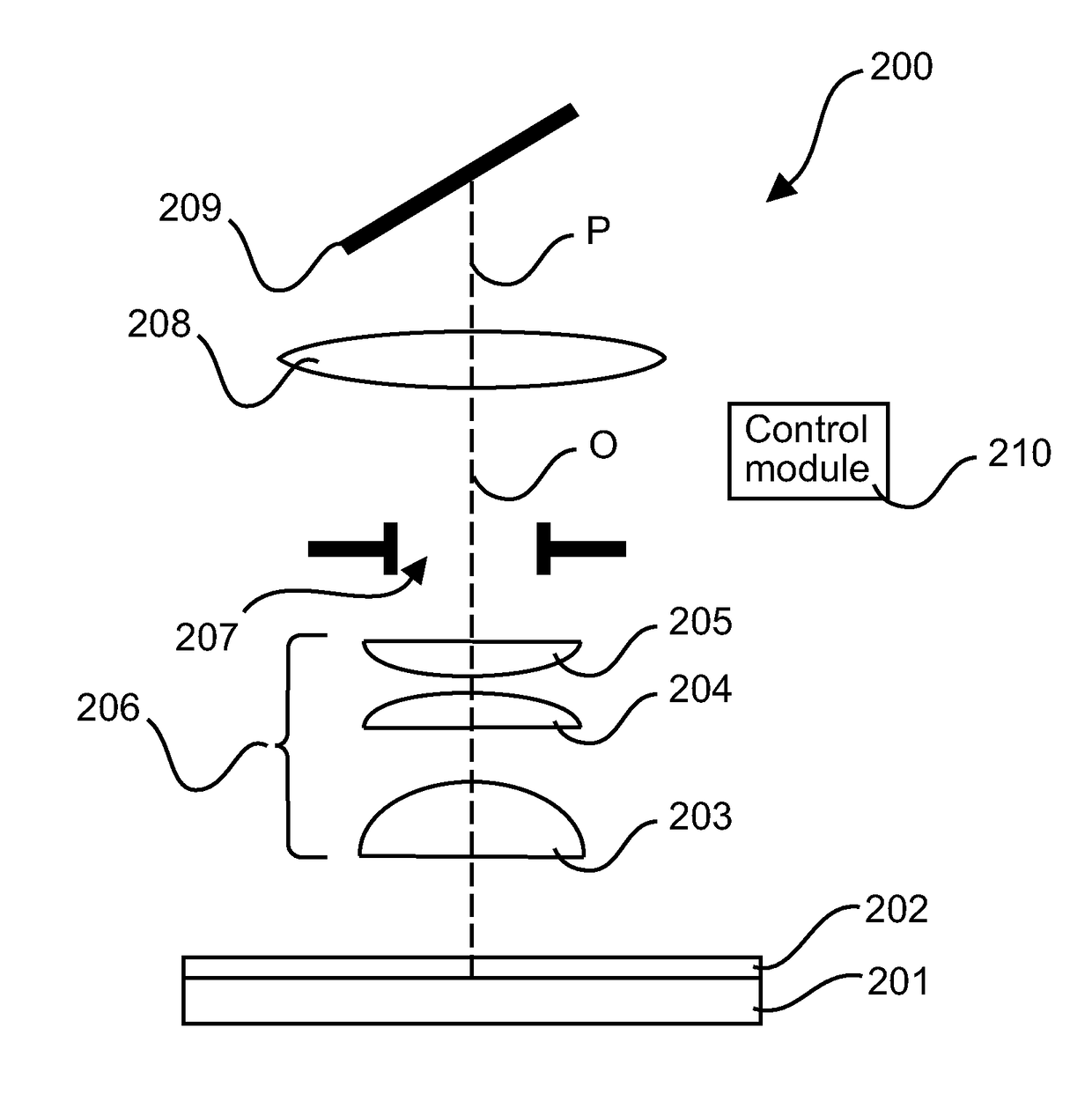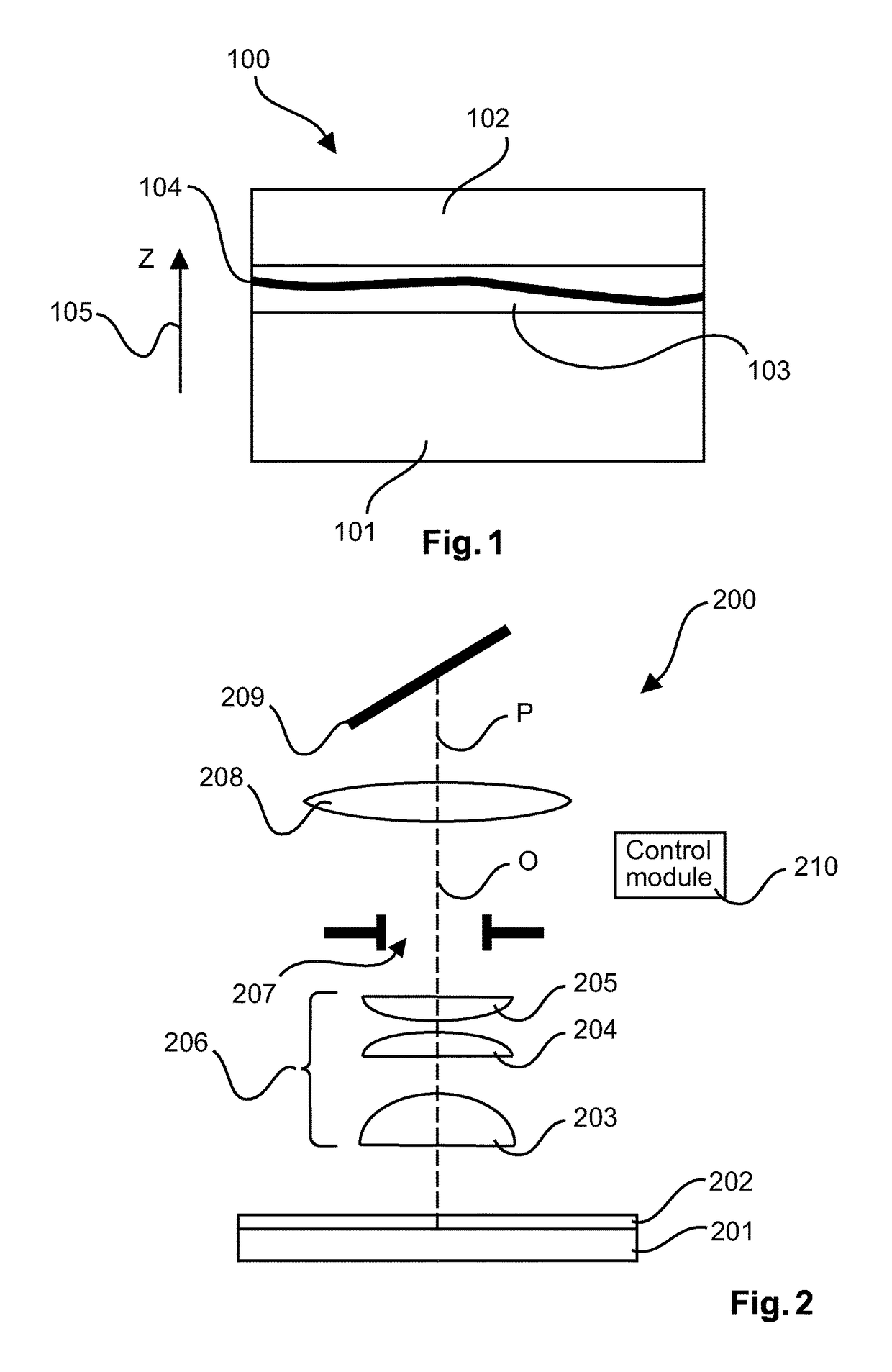Method for simultaneous capture of image data at multiple depths of a sample
a sample and image data technology, applied in the field of sample capture, can solve the problems of reducing the fill factor of the pixel and the relative low speed of reading out the region, and achieve the effects of maximizing the photo active part of the pixel, maximizing the fill factor, and optimizing efficiency
- Summary
- Abstract
- Description
- Claims
- Application Information
AI Technical Summary
Benefits of technology
Problems solved by technology
Method used
Image
Examples
Embodiment Construction
[0044]According to an exemplary embodiment of an imaging system of the present invention a scanning microscope 200 is shown within FIG. 2. The imaging system 200 can carry out the method for simultaneous capture of image data at multiple depths of the sample as described herein. Particularly, the imaging system 200 is configured for carrying out the steps S1 to S5 as disclosed in the context of FIG. 6. However, it is important to note that the imaging system 200 allows for a read-out method for generating seamless 2D or 3D images while changing capture depth during the scanning. This allows a fast image acquisition of not perfectly flat and / or volumetric samples. With this method and imaging system 200 it is possible to capture a seamless image, which would not be possible without the temporary dual, i.e., simultaneous readout, because a change in line sensor results not only in a change of acquisition depth, but also in a translation along the scan direction. This latter translatio...
PUM
 Login to View More
Login to View More Abstract
Description
Claims
Application Information
 Login to View More
Login to View More - R&D
- Intellectual Property
- Life Sciences
- Materials
- Tech Scout
- Unparalleled Data Quality
- Higher Quality Content
- 60% Fewer Hallucinations
Browse by: Latest US Patents, China's latest patents, Technical Efficacy Thesaurus, Application Domain, Technology Topic, Popular Technical Reports.
© 2025 PatSnap. All rights reserved.Legal|Privacy policy|Modern Slavery Act Transparency Statement|Sitemap|About US| Contact US: help@patsnap.com



